Stash Review: Automated Investing, Stock Trading and Banking
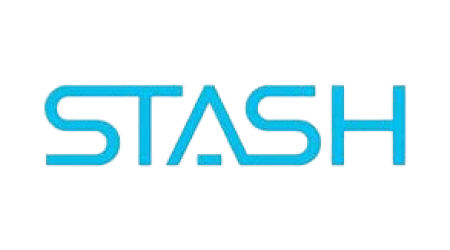
- Stock trade fee
- $0
- Minimum deposit
- $0
Our verdict
Stash offers a beginner-friendly platform, with automated investing, stock and ETF investing and low-fee banking services.
Stash is a subscription-based robo-advisor and brokerage platform that offers automated ETF investing, direct stock and ETF trading and banking services. It provides two plans priced at $3 and $9 per month, featuring commission-free access to stocks and ETFs, along with a debit card that allows you to invest spare change through round-up transactions. Unlike many other robo-advisors, Stash has no minimum requirement to open an account and only requires a $5 minimum investment to get started. However, it lacks advanced features such as tax-loss harvesting and does not offer a high-yield cash account for uninvested funds.
Best for: Beginning investors; Hands-off investors; Individuals who want to invest and bank from a single platform.
Pros
-
$0 minimum to open
-
$5 minimum investment
-
Commission-free stocks and ETFs
-
User-friendly platform
-
Custodial brokerage accounts and custodial IRAs
Cons
-
No tax-loss harvesting
-
No high-yield cash account
-
No human advisor access
Stash at a glance
| Feature | Rating | Details |
|---|---|---|
| Costs and fees | ★★★★★ | $36 annual fee ($3/month) and a $75 outgoing ACATS fee. |
| Portfolio mix | ★★★★★ | 3 prebuilt portfolios, with access to large-, mid- and small-cap companies, foreign companies and government bonds. |
| Features and amenities | ★★★★★ | Access to individual securities trading, automatic dividend reinvestment and educational resources, but no automatic tax-loss harvesting. |
| Account minimums | ★★★★★ | $3 monthly fee and a $5 minimum to start investing. |
| Account types | ★★★★★ |
|
| Mobile app rating and security | ★★★★★ | Google Play app reviews: 3.7/5 stars based on over 104,370 reviews, as of August 2024 Apple App Store app reviews: 4.7/5 stars based on over 306,910 reviews, as of August 2024 |
| Cash management account | ★★★★★ | Earn 0.1% interest on uninvested cash. |
| Customer support | ★★★★★ | Contact Stash customer support by phone at 800-205-5164 from 8 a.m. to 8 p.m. ET weekdays or email support@stash.com. |
To learn how our star ratings are calculated, read our methodology.
Stash is best for beginners
Stash is tailored for beginners and passive investors, offering a user-friendly interface that streamlines the investing process.
Its automated investing option creates custom portfolios of low-cost exchange-traded funds (ETFs), ideal for those who prefer a hands-off approach, while access to commission-free stocks and ETFs allows for more active control when desired.
With features like fractional shares, low account minimums and the ability to start with just $5, Stash makes it easy for new investors to begin and gradually build a diversified portfolio at their own pace.
Stash’s plans
| Plan | Monthly price | Features |
|---|---|---|
| Stash Growth | $3 |
|
| Stash+ | $9 |
|
What we like about Stash
Stash stands out with its low minimums, custodial accounts, user-friendly platform and access to commission-free stocks and ETFs.
Low minimums
Stash allows you to open an account with no minimum and start investing with just $5, making it far more accessible compared to robo-advisors like Schwab Intelligent Portfolios and Wealthfront, which require minimums of $5,000 and $500, respectively.
Access to custodial accounts
Stash is among the few robo-advisors to offer custodial brokerage accounts and custodial IRAs, giving parents, guardians or other family members and friends a way to invest on behalf of a minor. When the child reaches the age of majority, all the money in the account becomes their property.
Commission-free stock and ETFs
In addition to its robo-advisor, Stash offers the ability to invest in commission-free stocks and ETFs, with benefits like automatic dividend reinvestment, fractional shares and round-up investing using spare change from the Stash Stock-Back card.
You can also receive personalized guidance through Stash’s diversification analysis, which helps ensure your portfolio is well-balanced and provides tailored recommendations for improvement.
Beginner-friendly investing platform
Stash is accessible through both its web platform and mobile app, offering a seamless and straightforward investing experience. Users benefit from tools like curated collections of stocks and ETFs, along with basic charts and company statistics, all designed to make investing intuitive and informed.
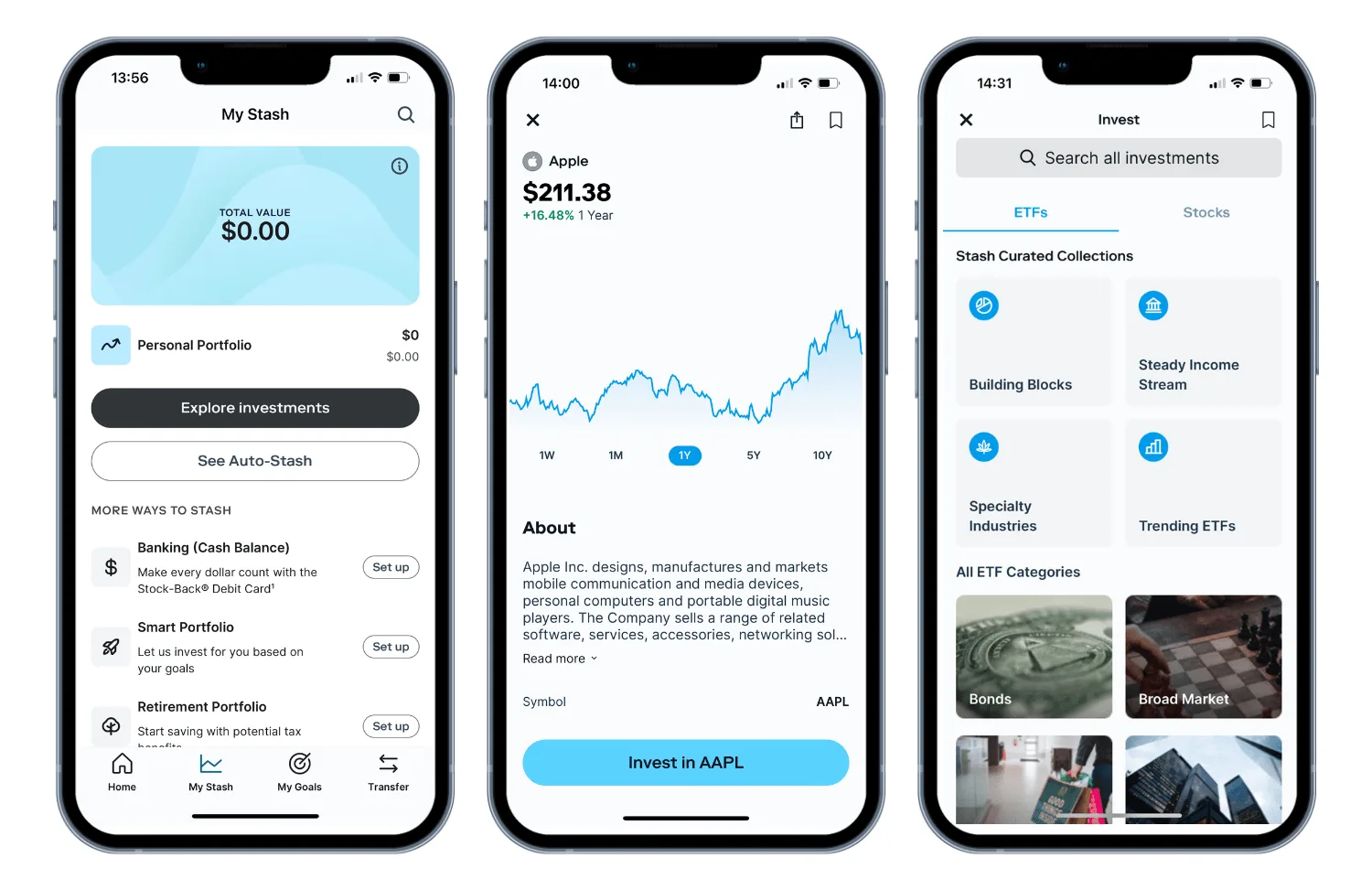
Where Stash falls short
Stash’s prebuilt portfolios are more limited than other robo-advisors, and Stack lacks features like tax-loss harvesting, access to human advisors and the ability to earn interest on uninvested cash. These may be drawbacks for some investors seeking more comprehensive services.
It offers only three prebuilt portfolios that span large-, mid- and small-cap companies, foreign companies and US government bonds. You won’t find ETFs with exposure to municipal or corporate bonds, commodities, cryptocurrency or real estate.
While it offers banking services, its savings account is non-interest bearing. Compare that to the 5% APY you can earn with robo-advisors such as Wealthfront and Betterment.
Stash’s fees
| Type of fee | Fee details |
|---|---|
| Annual advisory fee | 0% |
| Annual subscription fee | $36 ($3/month) or $108 ($9/month) depending on subscription |
| Account transfer fee | $75 |
| Stock trading fee | $0 |
| IRA closing fee | $0 |
| Inactivity fee | $0 |
Is Stash legit?
Yes, Stash is a legitimate company and broker. Founded in 2015, Stash currently has 1.5 million subscribers and manages approximately $3 billion in assets.(1) Stash is an SEC-registered investment advisor and broker-dealer and member of the Financial Industry Regulatory Authority (FINRA) and Securities Investor Protection Corporation (SIPC).
In terms of security, Stash’s platform is considered safe and secure. Stash employs two-factor authentication, industry-standard encryption and biometric recognition.
Stash reviews and customer experience
Stash has received mostly negative reviews across platforms like the Better Business Bureau (BBB) and Trustpilot and mixed reviews across Reddit. While the platform is generally well-regarded for its beginner-friendly design and educational resources, others criticize its high fees for small balances and issues with customer service, including difficulties with fund withdrawals and account closures.
As of August 2024, Stash earns a 1.09 out of 5 stars based on over 120 reviews, with over 780 complaints closed within the last three years. It holds a B rating and is not BBB-accredited.
On Trustpilot, Stash earns a 1.3 out of 5 stars based on over 720 reviews.
Compare Stash to other platforms
Compare similar platforms by available asset types, trade fees and minimum deposit requirements. Select Go to site to sign up for an account.
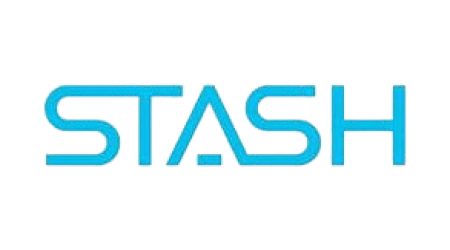
Stash
7.4 Great
Available asset types
Stocks, ETFs
Annual fee
$3 per month
Minimum deposit
$0
Signup bonus
Get $10 when you sign up and deposit $5
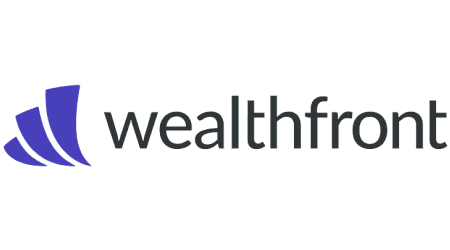
Wealthfront
9 Excellent
Available asset types
Stocks, ETFs, High-yield cash account
Annual fee
0.25%
Minimum deposit
$500
Signup bonus
Get $50
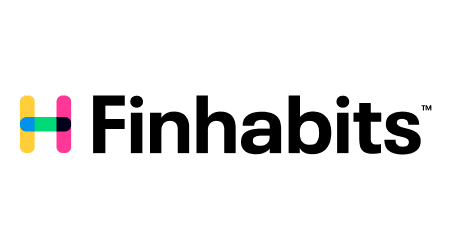
Finhabits
7.4 Great
Available asset types
ETFs, Savings
Annual fee
$10 per month
Minimum deposit
$0
Signup bonus
N/A
Frequently asked questions
Is Stash good for beginners?
Stash is an excellent option for beginners because of its low-cost automated investing, user-friendly interface and simple tools that make investing accessible even to those with no prior experience.
Does Stash offer other financial products?
In addition to investing, Stash offers low-fee banking services that include a debit card with spare-change investing, a savings account and early direct deposit access.
Finder Scores: What they mean

If you want peace of mind, this rating will give it to you. These products offer the best value and outcomes considering various product features, terms, conditions and price.
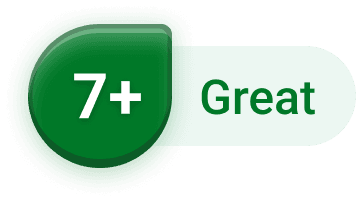
Well-balanced products that provide what you need, offering a healthy mix of competitive features at a good price. However, they're not quite the best in class.
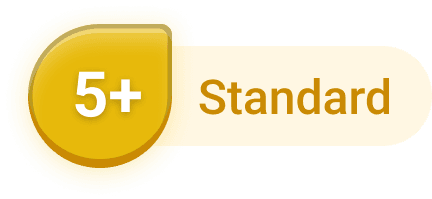
Bottom line: You can find better, but these products still offer reasonable value and have the basics sorted.
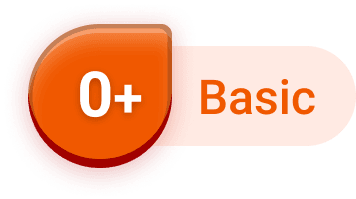
These products may not offer much value in the long run, and there are better options available.
Sources
Your reviews
Matt Finder
Investments editor and market analyst
You are about to post a question on finder.com:
- Do not enter personal information (eg. surname, phone number, bank details) as your question will be made public
- finder.com is a financial comparison and information service, not a bank or product provider
- We cannot provide you with personal advice or recommendations
- Your answer might already be waiting – check previous questions below to see if yours has already been asked
Finder only provides general advice and factual information, so consider your own circumstances, or seek advice before you decide to act on our content. By submitting a question, you're accepting our finder.com Terms of Use and Privacy and Cookies Policy.
This site is protected by reCAPTCHA and the Privacy Policy and Terms of Service apply.
